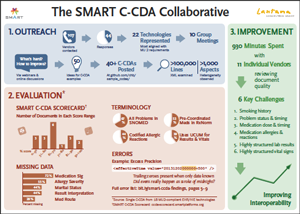By BRIAN OVERSTREET

Adverse Event Reports Since 2004. Source: OpenFDA
On June 3rd, the FDA launched OpenFDA, in an attempt to take large internal datasets and make them more accessible and usable by the developer and business community.
OpenFDA is delivered in a search-based API that should enable software developers to more easily build applications based on adverse event data from the FDA Adverse Event Reporting System (FAERS) dataset for the period 1/1/2004 to 6/30/3013. The FDA has announced plans to add device and food adverse events data to the framework, along with structured product labeling and recall data (update: drug and device recall data was added on July 16).
The launch was heralded with the sort of buzz and hoopla usually reserved for a major product launch from a Silicon Valley startup. We have held off on any analysis and opinion until now to give our team the needed time to look through the system thoroughly.
Now, I readily admit, I am biased. As a data geek with 15+ years working on Big Data problems, I really want to love OpenFDA. It is, after all, a major step forward both in terms of technology, but more importantly, philosophy from an agency that hasn’t exactly been a shining example of either in recent years.
In an ideal world, OpenFDA could usher in a world of new and improved tools and products that would improve patient safety and adherence, increase physician awareness of drug safety dangers, assist healthcare decision makers who are driving prescribing behavior with better decision support, and lower the overall cost of care by reducing avoidable side effects.
But we don’t live in an ideal world.
So, here are my thoughts on the Good, Bad, and Ugly of OpenFDA:
The Good:
OpenFDA is a seal of approval over the use of FAERS data in multiple settings. This is the first time that FDA has confirmed what we have believed all along – that these data are valuable and should be used in multiple venues to improve patient safety. It has long seemed ridiculous that the FDA spends millions of dollars to collect these data, uses it for their own internal safety signaling and review processes, but then deters others in the healthcare community from deploying these same data in new and innovative ways.
OpenFDA gives the long awaited ‘all-clear’ to harness the power of these data to improve care throughout the healthcare system. We’re excited to see how this evolves in the product space – especially at the patient level – in the months and years ahead.
The Bad:
As with any new launch, once the excitement dies down, the true capabilities and limitations of the system are revealed. After careful review we’ve discovered several major concerns, two of the big ones are detailed below:
Continue reading…






 A couple of weeks ago, President Obama launched a new
A couple of weeks ago, President Obama launched a new 










